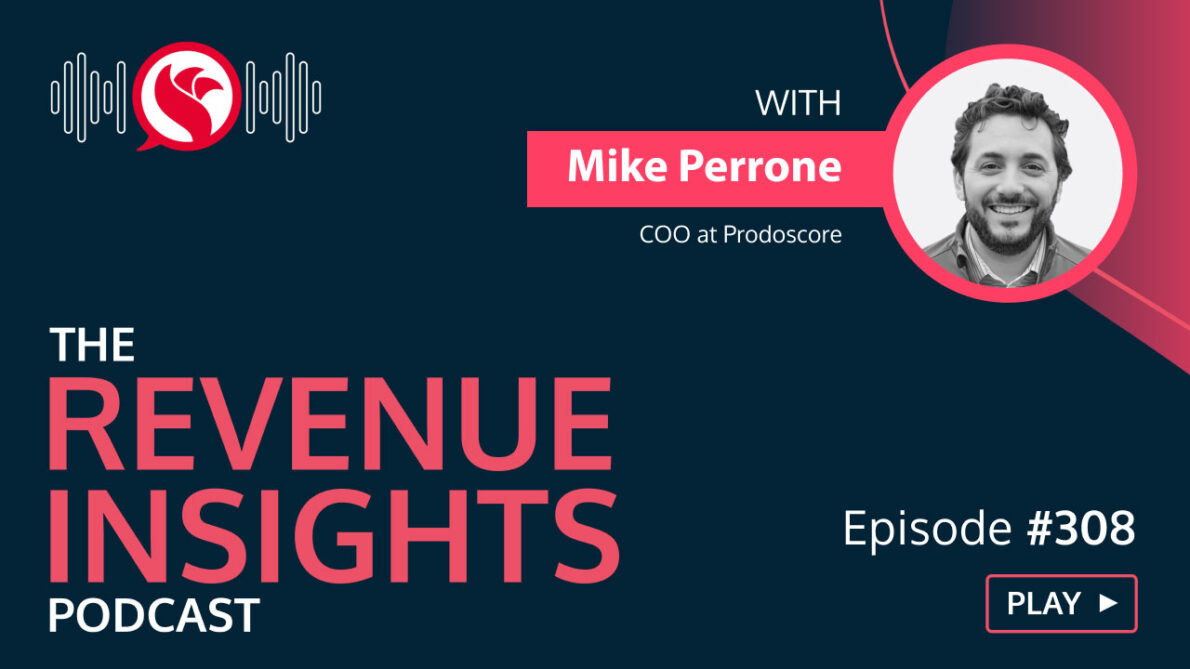Table of Contents
Share this article
Learn from the brightest minds how to predictably and efficiently grow revenue.
Related Content
Why Top Sales Leaders Get Coaching Wrong – And How an Olympian Fixes It with Matt Hemingway
In this episode of Revenue Insights, host Guy Rubin, CEO of Ebsta, sits down with Matt Hemingway, Vice President of Sales and Operations at Axcient, to explore how disciplined coaching, intentional leadership, and a culture-first mindset drive sustainable sales performance. Drawing on his background as an Olympic silver medalist, Matt shares how the mindset of…
How Top Performers Handle Objections 80% Earlier, with Hervé Timsit from EDB
In this episode of Revenue Insights, host Guy Rubin, CEO of Ebsta, sits down with Hervé Timsit, Chief Revenue Officer at EDB, to explore objection handling and the evolving landscape of enterprise software sales. With over 17 years of experience, Hervé shares insights on leading global sales teams, implementing data-driven strategies, and the critical role…
Why Value Alignment is the New Growth Engine, with Dan Sylvester from SundaySky
In this episode of Revenue Insights, host Adam Roberts, Sales Director at Ebsta, sits down with Dan Sylvester, SVP of Revenue at SundaySky to explore value alignment and the evolution of B2B sales and customer success. Dan shares insights on the growing importance of personalized video content, maintaining brand consistency while democratizing content creation, and…

Transforming Productivity Metrics with Mike Perrone, COO at Prodoscore
This week on the Revenue Insights Podcast, Guy Rubin, founder and CEO of Ebsta, speaks with Mike Perrone, Chief Operations Officer at Prodoscore.
In this episode, Guy and Mike discuss data-driven productivity scores, bridging employee flexibility with executive accountability, and how to empower sales teams through actionable insights and tailored coaching.
Mike Perrone is Chief Operations Officer at Prodoscore, an AI-powered and employee-centric data intelligence solution dedicated to making teams more successful. Before working as COO, Mike held the position of Chief Revenue Officer. He has over twenty years of experience in sales leadership, team building, operations management, and customer experience. Mike has also worked for Vonage and Cbeyond.
- Mike Perrone on LinkedIn
- Prodoscore website
- Guy Rubin on LinkedIn
- Ebsta Revenue Insights Newsletter
Time Stamps:
- 00:00 – Introduction
- 00:27 – What is Prodoscore?
- 06:34 – Mike’s career path
- 09:21 – Prodoscore’s tech stack
- 11:38 – Predicting sales performance through call data
- 14:00 – Creating demand for new tech solutions
- 17:33 – Looking ahead to the future
- 23:03 – Identifying what good performance looks like at different stages
Highlights of Transforming Productivity Metrics
What is Prodoscore?
Prodoscore is a productivity intelligence solution. It aggregates data from a wide variety of cloud tools, such as phone systems, Slack, Zoom, and CRM, to produce a productivity score from zero to one hundred. Mike imagines this score like a FICO score, where a lender can digest thousands of financial data points and quickly make a decision. The tool works by using application programming interfaces (APIs) to sync the different cloud tools and collect data. The result is a “blueprint for employee success” that identifies successful and unsuccessful behaviors.
Looking Ahead to the Future
Mike says that Prodoscore’s customers have requested more real-time alerts, trend analysis, and actionable insights that will better allow managers to identify key behaviors. Prodoscore is developing these capabilities using programs such as Google’s AI tools, Vertex and Gemini in order to analyze data and offer trend insights along with coaching recommendations. Mike highlights how Prodoscore is creating an employee-facing program akin to a fitness tracker, which will allow employees to see the same trends and data points that management sees.
Foundational Productivity Habits
Mike notes how ProdoScore does not track any of the later (and often more detailed) stages of the sales process, such as deal management or pipeline closing. Instead, the tool measures what activity level an employee needs to maintain to gather opportunities. For instance, managers are able to get insights into why a sales rep isn’t generating enough leads—perhaps the reason lies in their activity level, rather than deal management skills. The name of the game is identifying and building foundational productivity habits that eventually lead to growth and opportunities.
Subscribe to the Revenue Insights Podcast:
Recommended Episodes:
- You Can’t Sell to Someone Who Can’t Buy with Michael Dalley, CRO at Aerial Vantage
- From Inbound to Outbound: The Sago Sales Transformation with CRO Katharine Reagan
- Optimizing Sales Operations Success with Akira Mamizuka of LinkedIn
- Active Listening, Intent Data, and Events as Pipeline Game Changers with Leslie Venetz of The Sales-Led GTM Agency
